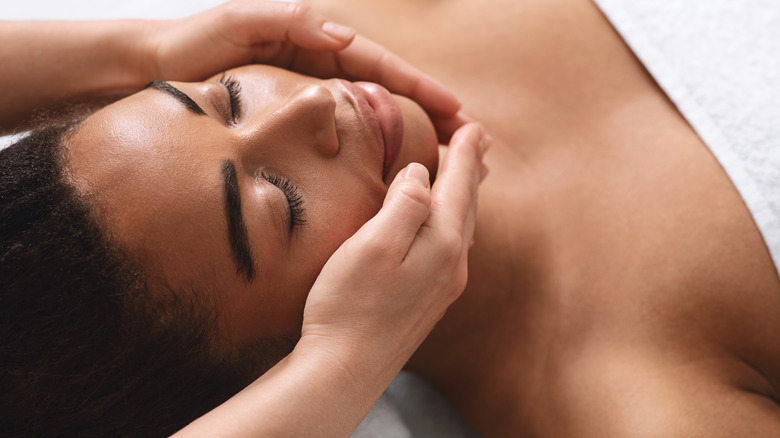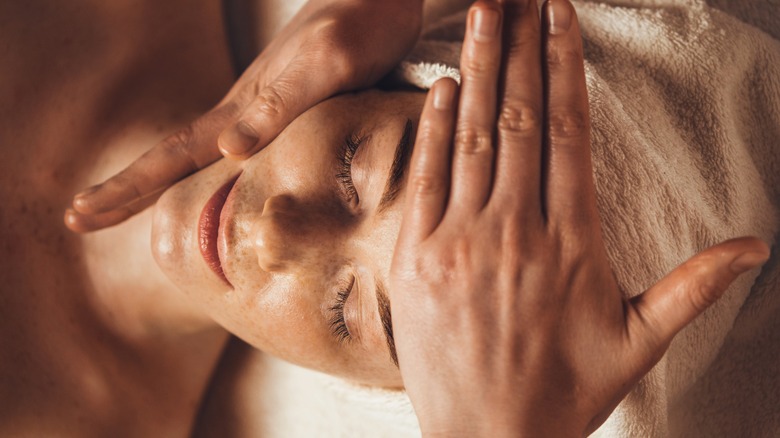Korean Facials Vs. American Facials: What's The Difference?
There's nothing like going to a spa for a relaxing facial that leaves you feeling calm and rejuvenated. Whether you want to achieve the popular "glass skin" look that originated in Korea or just like the idea of feeling refreshed, there's no doubt that facials can help us feel better mentally — not to mention the obvious benefits they offer for your complexion. There are tons of facial types out there, from lymphatic massage facials to more out-there ones like vampire facials, but two of the most popular are the ones found in Korea and America.
So, should you get a Korean or American facial? The two procedures differ on almost every level, from price to products to how you'll feel during and after the process. If you're torn about which facial to choose, we've rounded up some of the most crucial similarities and differences so you can decide whether a Korean or American facial is right for you.
There are many differences between Korean and American facials
For starters, facials are much more common in Korea than in America. In many places, going to the spa is seen as a luxury activity, but a facial is just part of regular skin care in Korea. This also contributes to a majorly influential factor when it comes to getting a facial — price. Due to the commonplace nature of facials and the widespread culture of skin care in Korea, a facial is generally much cheaper than it would be in the U.S. In fact, when converted to American dollars, a Korean facial costs anywhere from as low as $30, going up to $75. This is in major contrast to getting a facial in America, which can start from $100 and go up to the high hundreds.
Once again, this price difference has to do with the availability of Korean vs. American facials. If you were to seek out a Korean skin care center in America, the price would still be far more than it would cost for a similar facial in Korea, simply because this aspect of skin care is not seen as a luxury in Korea as it is in America.
Both facials differ when it comes to post-cleansing products
Though both Korean and American facials start with a deep cleansing routine, Korean facials focus more on hydration and pore reduction so your skin is left looking glowy. This doesn't mean Korean facials don't do any exfoliation at all — both Korean and American facials feature different kinds. Of course, there are exceptions depending on the type of facial you go for. The majority of Korean facials also focus on plumping your skin, so using rubber and mud face masks is relatively common.
Unlike American facials, which are a wholly relaxing experience, Korean facials are all about making your skin look better. This means they use as much massage pressure as needed — even if it feels uncomfortable. Another interesting difference between Korean and American facials is that Korean facials aren't restricted to your face. It isn't uncommon to have your breasts massaged as part of the facial process in Korea, unlike in America, where facials are normally restricted to the face and upper chest area.
Overall, American facials are a rare luxury experience good for big events, whereas Korean facials are more of a weekly thing designed to help you maintain a plump and fresh complexion.


